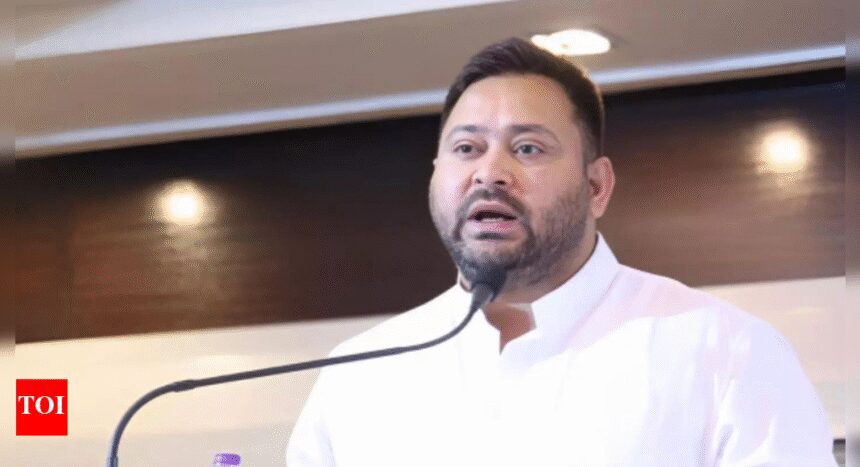PATNA: In the 2020 Bihar assembly elections, the Rashtriya Janata Dal (RJD) and its grand alliance partners came close to forming the state government. The difference between the RJD-led coalition and the National Democratic Alliance (NDA) was a mere 12 seats, with a vote difference of only 11,150.
As Bihar approaches another significant assembly election, Chief Minister Nitish Kumar is still considered the leading incumbent, with Tejashwi Yadav positioned as the principal challenger. Over the past five years, Tejashwi, son of RJD chief Lalu Prasad, has developed a more independent political persona, moving beyond relying solely on his father’s political influence and the “MY” (Muslim-Yadav) equation. He is now advocating for a broader coalition with the slogan “MY BAAP,” which includes not only Muslims and Yadavs but also Bahujans (Scheduled Castes and Scheduled Tribes), forward castes, women (referred to as “aadhi abadi”), and the economically disadvantaged.
Tejashwi aims to leverage his youthful image and his commitment to generating permanent employment, establishing himself prominently within the opposition. The NDA is now forced to center its campaign around Tejashwi’s promises—such as providing government jobs, direct financial support of ₹2,500 per month to women, offering 200 units of free electricity, increasing social security pension from ₹400 to ₹1,500, formulating a domicile policy, and establishing a youth commission. Tejashwi has effectively criticized the NDA for adopting his proposals.
During a rally in Ara, where he shared the stage with Congress leader Rahul Gandhi and Samajwadi Party chief Akhilesh Yadav, Tejashwi referred to Nitish Kumar’s government as a “copycat.” He declared, “Tejashwi is ahead; the government is behind,” and asserted his role as the chief ministerial candidate, challenging the audience with the question, “Do you want a duplicate CM or an original CM?” In subsequent interviews, he emphasized that the RJD-led coalition would not approach the elections without presenting a chief ministerial face.
Political analyst B.N. Prasad from the A.N. Sinha Institute of Social Studies notes, “Tejashwi has gone beyond his father’s M-Y equation and is examining social realities from a fresh lens, making independent decisions and asserting himself not just as the leader of the RJD but the INDIA bloc as well.” He highlights that Tejashwi’s focus on education and employment has resonated with the youth. Additionally, the traditional political narratives that the NDA utilizes against Lalu Prasad—such as crime and corruption from his tenure as chief minister—do not apply to Tejashwi. “Lalu carries the weight of history; Tejashwi does not,” Prasad states.
Consequently, although Lalu remains the primary target for the NDA during election rallies, the ruling coalition has notably refrained from directly attacking Tejashwi due to his increasing popularity. Having learned from past electoral setbacks, Tejashwi has adopted a focused and strategic campaign approach. He has avoided making statements that could alienate any segment of the coalition he seeks to build, while working closely with INDIA partners. Tejashwi has also expressed full support for Congress’s Voter Adhikar Yatra, which garnered substantial crowds in rural areas, particularly amid the Election Commission’s contentious special intensive revision of Bihar’s electoral rolls.










